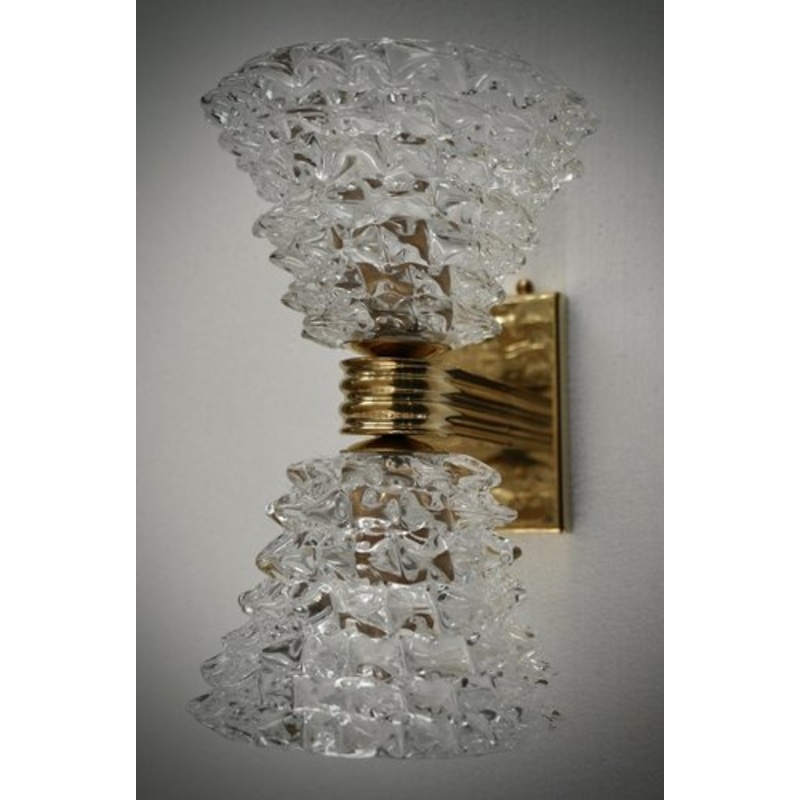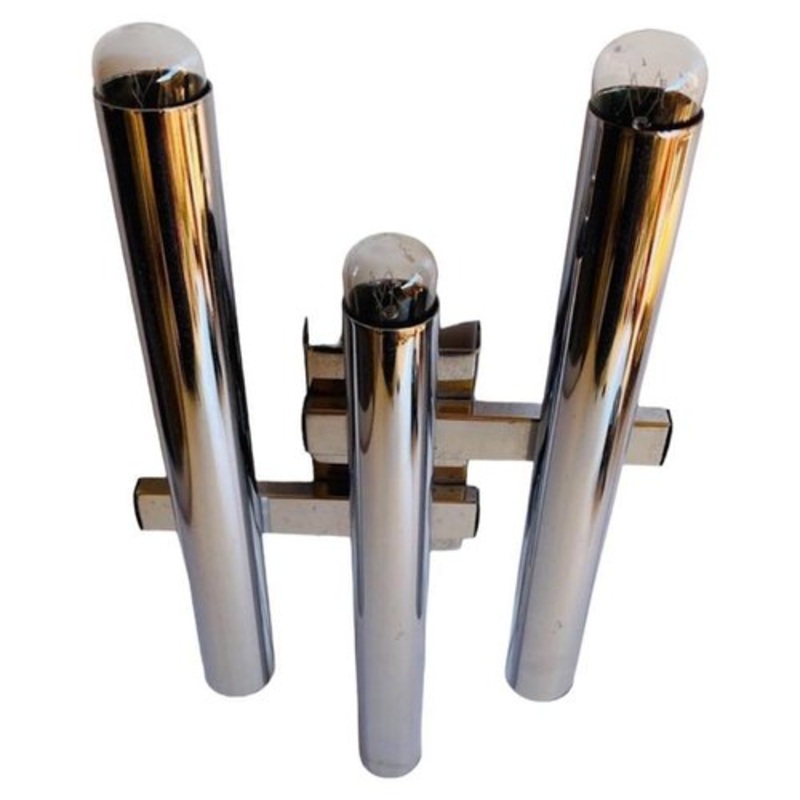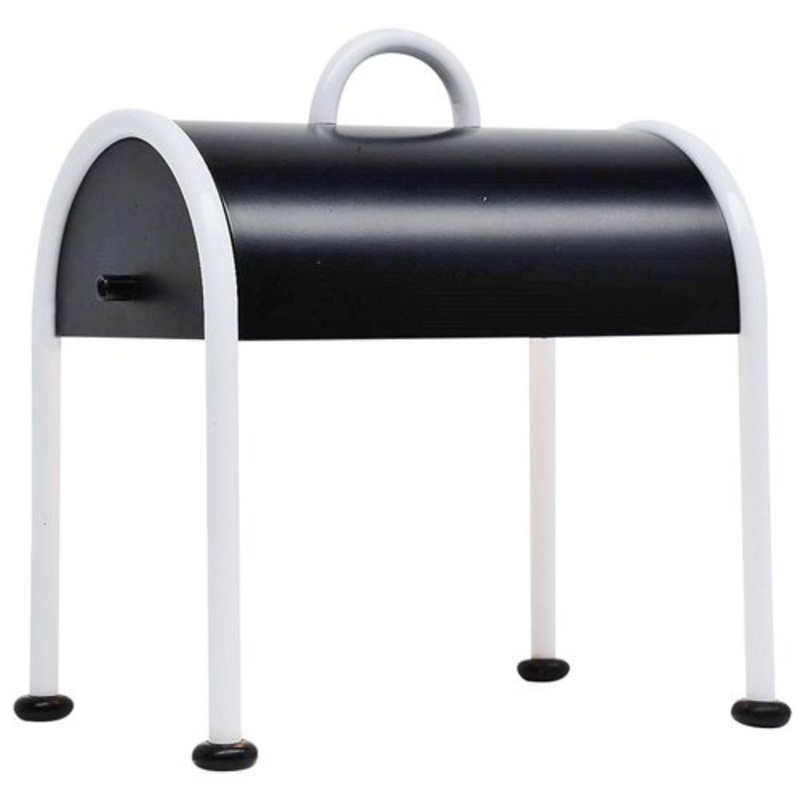Description
Wall Mounted Light By Wilhelm Wagenfeld For Lindner Circa 1950s. White porcelain housing with opaline glass shade – Takes E27 fitting bulbs – Designed by Wilhelm Wagenfeld – Produced by Lindner, Model 961 – German ~ 1950s – 16cm tall x 36cm wide x 36cm deep Wilhelm Wagenfeld Wilhelm Wagenfeld completed an apprenticeship at the design office of the Bremen silverware factory of Koch & Bergfeld during the First World War. In addition, he attended the local applied arts school from 1916 to 1919. Between 1919 and 1922, he received a scholarship to the State Design Academy of Hanau/Main and trained to become a silversmith. In 1923, he set up a workshop at the Barkenhoff in Worpswede with Bernhard Hoetger and Heinrich Vogeler. This is also the year that he began studying at the State Bauhaus in Weimar. During this time, Wagenfeld designed works such as his famous Bauhaus lamp in 1924. After the dissolution of the Bauhaus Weimar on 1 April 1925, he became a member of the German Werkbund and accepted the position of assistant to Richard Winkelmayer, the head of the metal workshop at the State Academy of Crafts and Architecture in Weimar. In 1928, he took over the direction of these metal workshops. He and many of the other teachers at the academy were fired in 1930 at the insistence of the NSDAP party, which was represented in the Thuringian Landtag. Starting in 1930, this was followed by freelance work and a commission from the Thuringian Economics Ministry to supervise independent glassblowers. In addition, he was asked to begin teaching at the State Art Academy Grunewaldstrasse in Berlin-Schneberg in 1931 and began working as a freelance employee of the Jena Schott & Gen. glass factory at that time. from 1935 to 1947, he was the artistic director of the United Lausitzer Glass Works (Vereinigte Lausitzer Glaswerke) in Weisswasser/Oberlausitz. In 1937, his work exhibited at the Paris World Exhibition was distinguished with the Grand Prix. The same award was bestowed on him in 1940 by the Milan Triennale. Following his military service in 1944 and war imprisonment in 1945, Wagenfeld returned to Weisswasser. He subsequently received numerous appointments to academies. This included a lectureship at the Berlin Academy of Fine Arts through Hans Scharoun, as well as the directorship for the Typing and Standardisation Department at the Institute for Civil Engineering at the German Academy of the Sciences. In 1949, Wagenfeld was given a position as a consultant for industrial design at the Wrttemberg State Office of Trade in Stuttgart. Between 1950 and 1977, he collaborated with the Wrttemberg Metal Works (Wrttembergische Metallwarenfabrik AG, WMF) in Geislingen. He founded the Experimental and Developmental Workshop for Industry Models in Stuttgart in 1954, which existed until 1978. This is where designs were created for many industrial enterprises such as the Rosenthal-Porzellan AG, the Peill & Putzler Glashttenwerke GmbH, the Braun Company and the Pelikan factory. from 1955 Wilhelm Wagenfeld began to design for Lindner. Ceiling, wall, corner and mirror lights. Lindner In 1901 Kurt Lindner ( born March 10, 1877 in Groenhain, Saxony; April 6, 1966 in Eggolsheim, Bavaria) took over the management of a bankrupt factory for electrical ceramics (fuses, sockets, switches, etc.) in Jecha near Sondershausen /Thuringia. from 1902 the company, now called Lindner & Co., became a special factory for electrotechnical products. 1925 1,100 employees. 1938 Takeover of the company Hugo Lbl und Sons in Bamberg (Aryanization). 1946 dismantling by the Soviet Union. 1948 The company becomes public property. Kurt Lindner (born November 27, 1906 in Sondershausen; November 17, 1987 in Bamberg) moved to Eggolsheim near Bamberg, where the existing plant was expanded. from 1955 Wilhelm Wagenfeld began to design for Lindner. Ceiling, wall, corner and mirror lights. Condition Report Each light has been cleaned, re wired and tested. There is a chip to the inner lip of the glass on one shade however this does not affect the function of the lamp nor is it visible when the lamp is installed and assembled.
| Creator |
Wilhelm Wagenfeld |
|---|---|
| Design Period | Before 1890 |
| Production Period | Before 1890 |
| Country of Manufacture | Germany |
| Style | Vintage, Industrial, Bauhaus |
| Detailed Condition |
Good This vintage/antique item may have some wear such as scratches and other signs of ageing. |
| Product Code | MGO-2039527 |
| Materials | Glass, Metal, Mirror, Opaline Glass, Porcelain |
| Color | Brown |
| Width |
36 cm 14.2 inch |
| Depth |
36 cm 14.2 inch |
| Height |
16 cm 6.3 inch |
| Weight Range | Standard Between 40kg and 80kg |
| Duties Notice | Import duty is not included in the prices you see online. You may have to pay import duties upon receipt of your order. |






Reviews
There are no reviews yet.